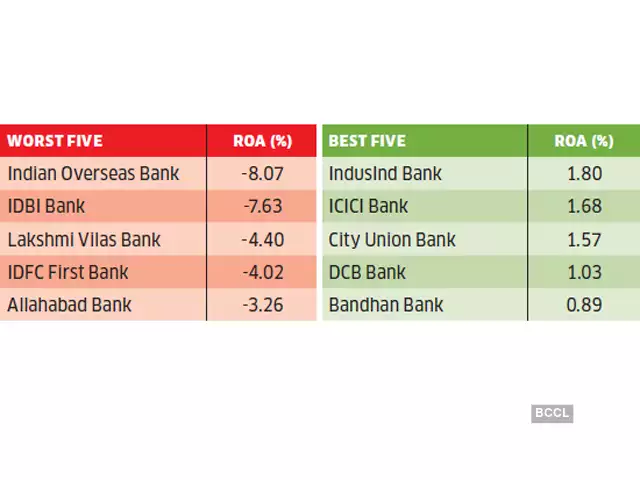What is Working Capital? Definition, Concept, Types, Importance, Factors


Also the working capital requirement depends on the industry and modus operandi of the company. Likewise, any commitment that the business is obligated to acknowledge within a period of one year is considered a current liability. Receipts for the expenses of business operation and the current components of long-term debt payment plans are examples of this.
Assets are what a enterprise owns and are liquid, or current, if they’ll shortly be converted to money and shall be used within one 12 months. Liabilities are what a enterprise owes and are present in the event that they must be paid within one yr. Turnover represents the speed with which the working capital is recovered by the sale of goods.
- Trade DiscountsThe reduction in list price allowed by a supplier to the consumer while selling the product in bulk quantities is referred to as a trade discount.
- Management should also estimate the working capital requirement in monetary terms.
- But they cannot be called capital, because they represent only titles of ownership rather than factors of production.
- Notes receivable — such as short-term loans to customers or suppliers — maturing within one year.
- Deciding the structure of current assets (i.e., the proportion of long-term and short-term capital to finance current assets).
The number of operating cycle in a period is determined by dividing the number of days in the same by the length of Net Operating Cycle. Once the number of operating cycle has been determined, the actual Working Capital requirements is then arrived at by dividing the total operating expenses for the period by the number of operating cycle in that period. Needless to say that major bulk of working capital is needed for financing inventories and followed by accounts receivables, loans and advances and liquid cash. However, the net requirement of working is ascertained after adjusting the credit allowed by supplies and the credit allowed to the customers. In order to ascertain the real position of wording capital, certain adjustments, which are abnormal in nature, are to be adjusted against each component of current assets and current liabilities. At the same time, it is also to be looked into whether or not, the current assets or current liabilities are window-dressed.
How is Capital different from Money?
This determine indicates that you may not be capable of pay your collectors and could end up in bankruptcy court docket sooner rather than later. A large amount of outstanding customer debt because of slow collections can even damage your figures. Name the different capital budgeting decision techniques available to the small business owner.
A working capital loan is a loan taken to finance a company’s everyday operations. Capital, thus, consists of those physical goods which are produced for use in future production. Machines, tools and instruments, factories, canals, dams, transport equipment, stocks of raw materials, etc., are some of the examples characteristics of working capital of capital. All of them are produced by man to help in the production of further goods. There is no doubt that securities, bonds, stocks, shares, etc., possessed by a man yield income to him. But they cannot be called capital, because they represent only titles of ownership rather than factors of production.
With the sale of merchandise finished goods turn into accounts receivable, presuming the goods are normally sold on credit terms. Working capital comprises current assets which are distinct from other assets. In the first instance, current assets consist of those assets which are of short duration. For example, cash is held idle for a week or so, accounts receivables may not have a life span of more than three months and inventories may be held for one to three months. Inventory is another significant part of current assets and, without a doubt, forms an integral component of working capital management.
Application of capital to agriculture, trade, transport and industry creates work on the farms, in the factories, in commercial houses and on roads, railways, ships, etc. It is the lack of capital which is responsible for unemployment, or under-employment in backward countries. A sure way to tackle the problem is to create more and more capital. In modern times, capital is performing another very important function, viz., to provide employment. This function is of special importance to under-developed or developing economies. Among the determinants of employment in a country, probably the most important is the saving and its investment in the form of capital.
A managerial accounting strategy specializing in sustaining environment friendly levels of both components of working capital, current belongings, and current liabilities, in respect to each other. Working capital management ensures a company has enough cash move to be able to meet its short-term debt obligations and working expenses. Your final aim will be to be able to continue the corporate’s day-to-day operations with sufficient cash move to cover short term debts in a timely method and to additionally deal with operational expenses.
Capital is Man-Made
The administration of working capital entails managing inventories, accounts receivable and payable, and cash. This operating liquidity is essential to being able to pay your brief time period debts corresponding to bank loans and contours of credit in addition to day-to-day operational bills if your company is going to remain in business. Working capital is a measure of an organization’s liquidity, operational effectivity and its quick-time period monetary well being.

The company has more short-term debt than it has short-term resources. Negative working capital is an indicator of poor short-term health, low liquidity, and potential problems paying its debt obligations as they become due. At times, business needs to estimate the requirement of working capital in advance for proper control and management. The factors discussed above influence the quantum of working capital in the business. The assessment of working capital requirement is made keeping these factors in view. Each constituent of working capital retains its form for a certain period and that holding period is determined by the factors discussed above.
In other words, efficient working capital management means ensuring sufficient liquidity in the business to satisfy short-term expenses and debts. The strategies of working capital management commonly include methods to analyze the key findings from the current capital. This analysis can help a business operative acquire the significant ratios of their business capital. These ratios include the working capital ratio, the collection ratio, the inventory turnover ratio, and so on. These ratios can further help indicate the significant figures in the operation of the business, such as current assets, current liabilities, and cash flow. But temporary current assets are financed with short-term sources and when their level increases, the level of short-term financing also increases.
Importance of Working Capital
In that case, such a scenario improves the business cash conversion cycle and results in less working capital requirement, ultimately boosting profits. Because both figures are said within the balance sheet of your company, the calculation of working capital is pretty simple. A great amount of working capital or an increase in working capital means that your company’s property are sufficient to cowl liabilities that are quickly due. A adverse change in working capital means your company most likely can’t pay bills which might be coming due, which may imply that you have to make some modifications. A fast have a look at a company’s balance sheet information over the interval of some years shall be a wonderful indicator of the financial health of that firm.
Characteristics of Working Capital.
Public utility undertakings like electricity, water supply and railways need very limited working capital because they offer cash sales only and supply services not products. Excess working capital means, there is a defective credit policy and collection policy. Only concern with adequate working capital can exploit favourable market conditions such as purchasing its requirements in bulk when the prices are lower and by holding its inventories for higher prices. Adequate working capital helps in maintaining solvency of the business by providing uninterrupted flow of production. The above determinants should be considered, because no certain criterian to determine the amount of working capital needs that may be applied to all firms.
When the calculation result’s positive, a enterprise has greater than sufficient liquid belongings to pay its bills and is using its property effectively. When the calculation is unfavorable, a business does not have sufficient liquid assets to pay its payments and may be at risk of bankruptcy. Since working capital is equal to the distinction between current assets and current liabilities, it may be both a positive or a unfavorable quantity.
If the net working capital is positive, business is able to meet its current liabilities. Net working capital concept provides the measurement for determining the creditworthiness of company. Under this policy, a firm finances a part of its permanent current assets with short- term financing.
But, as soon as the peak period is over, their working capital becomes idle. 8.1 that permanent working capital is constant but variable working capital fluctuates i.e., sometimes increasing or sometimes decreasing according to seasonal demands of the product. As the level of business activities fluctuates, the volume of temporary working capital also may keep fluctuating. Temporary working capital is also known as fluctuating or variable or circulating working capital.
In period of boom i.e. when the business is prosperous, there is need for larger amount of working capital due to increase in sales, rise in prices, and expansion of business. Greater the size of business unit, generally larger will be the requirement of working capital. In some case even a smaller concern need more working capital due to high overhead charges, inefficient use of resources etc.
Category: Uncategorized










